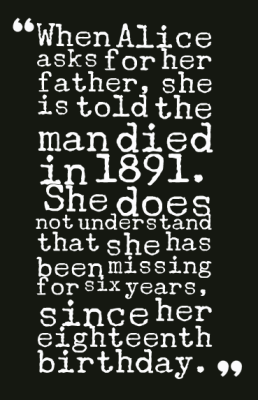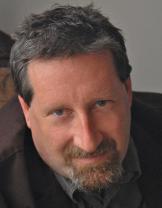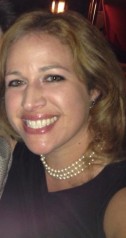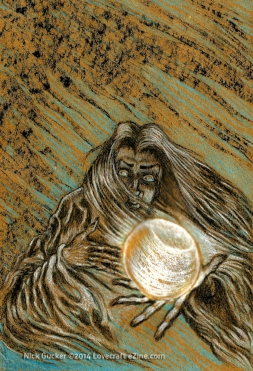It’s the 4th of September, 1935, and I am in Kingsport, not far from where I was born. I lounge in the shadow of Kingsport Head, surrounded by friends and family. My son Wingate wishes me a happy sixtieth birthday. He is just back from Australia, where he and his father went on an expedition. He wants to tell me something, but then changes his mind. I don’t like to talk about my ex-husband and Wingate knows it. A rabbit runs across the field with children chasing behind it. They have no chance of catching the poor creature, but it is not the rabbit that I am worried about. I rise, open my mouth, but then catch myself. What would I say? I settle back down in my chair. My grandson John brings me cake and lemonade. I pat him on the head and give him a hug. He smells of youth, clover, sweat and chocolate. He has his mother’s eyes, but looks like his father – Hannah’s husband, Samuel Beckett. After I finish my slice of cake, Wingate comes back and hands me a book, an album of photographs. I haven’t seen it, or worked on it in years. I wonder aloud where they found it, and but they ignore me. They’ve given the old woman her book of memories, the one she created for herself, and now expect her to be fully occupied; whatever she may say can’t be all that important. I rummage through my handbag and find the key to the clasp. The book creaks open and falls to the last page. I don’t mind; the end is as good a place to start as any.
The photograph on the last page is grainy and creased, but the image of London’s Tower Bridge is unmistakable. I am in the foreground holding one of my novels, The Creeping Past. To my left is a middle-aged man with a serious look on his face and a mass of well-kept hair. His name is Olaf Stapledon, and like me he is holding up his latest work so that the camera can catch the title. On my other side is Stapledon’s protégé, the young poet Paul Tregardis. It is the 5th of June, 1931, and Tregardis’ birthday – he has just turned twenty-two. We celebrate at our publisher’s expense. There is too much music, too much food, too much liquor. Olaf’s wife doesn’t like Tregardis; he is brash, irrational, and compulsive. At midnight, Paul asks me to marry him. I laugh at the joke but when his face turns sour I realize he is serious. I am more than twice his age. I reward his adoration with a kiss, and then suddenly I know. I kiss him again and let his future wash over me. We spend the night together, and I accept his proposal, knowing that I will never see him again.
The next evening I stop by his small London apartment and use the spare key to gain entrance. There is a strange, blue viscous material covering his desk and chair. It is rapidly disappearing, evaporating in the sunlight. Within minutes it is gone. On the desk there is a receipt from a nearby curio shop. I take it to the proprietor. The bent old man scratches his beard and says something in Hebrew. He remembers the item: a crystalline sphere, clouded like milk, flattened on opposite ends. It had been found in Greenland, he thought. A pretty enough piece, full of whatever intrinsic mystery an owner could imagine, but not overly valuable, or exotic. I spend the evening writing the story of Paul’s last day. I tell of how he found the sphere, what he thought it was, and what it showed him. Wright buys the story from me, and hints that it might be given a cover illustration, but I already know he is lying. The story is published under a pseudonym and is titled ‘Ubbo-Sathla’.
I turn the page.
It is 1924, the 2nd of September, and I am in New York. The photograph shows the members of Hannah’s wedding party; in the background is Brooklyn’s Museum of Fine Arts where her new husband is a junior curator. His supervisor is sophisticated, charming, refined. Dr. Halpin Chalmers is a graduate of Miskatonic University, so we spend some time reminiscing about the faculty and Arkham. He asks me to dance. He sweeps me off my feet. The next day he sends me flowers. We go for long walks in Central Park. His friends are like him, charming and sophisticated. There is a private detective, a man named Charles who tells some of the most outrageous stories. He knows everyone, and everyone knows him. He takes Halpin and me to the most interesting of places: private gardens, hidden museums, secret clubs. In the spring of 1925, when Halpin and I marry, Charles is Halpin’s best man.
We live in a brownstone apartment; on weekends and holidays we travel to Partridgeville where Halpin was raised. It is a lovely town, and beautiful country. I write, long hand, and then I pay one of the secretaries from the museum to type the manuscripts. Halpin acts as my first reader and editor. By the fall we are working as a team, and in October he sells his first standalone story. He gains in notoriety, and soon finds working with me slow and tedious. In 1926 he has published twenty stories, and announces that he will be retiring from the museum the next year. He writes voraciously, not just stories but letters, postcards, and even editorials. He writes a novel in a month. By 1927 there is no more room for me in his life, and we divorce. At the courthouse he hugs me and apologizes for his mania. I squeeze back and I can feel his future. That evening I write it all down and wait.
He moves to Partridgeville and writes day and night. He becomes addicted: First to cigarettes, then caffeine, and then alcohol. He experiments with drugs, the extracts of plants and certain lizards and amphibians. He writes while under the influence and becomes obsessed with the concept of time and how it is perceived. In the spring he empties his apartment of all his furniture. He buys plaster and turns his boxy little room into a smooth, curving surface. On July 2nd, 1928, a tremor shakes the town. When the authorities find his body, it is covered with a blue, jelly-like substance. The smooth flowing plaster is cracked and broken. The walls of the apartment are comprised of jagged, twisted angles. The police blame the tremor; I am not so sure it is not the other way round. I get a copy of the medical report and append portions of it to my story. I publish it under my Long pseudonym. A publishing house in Arkham wants to use it as the title story for a collection. I am hesitant, for it would risk exposing my true identity.
On the next page the newspaper report screams in bold letters that I have divorced my husband Professor Nathaniel Wingate Peaslee. It is October the 8th, 1910, and Nathaniel is a celebrity, at least in Arkham, but through no fault of his own. Something has happened to him; he has forgotten himself. By this time it has been more than two years since the man I loved, the father of my children, collapsed while lecturing at Miskatonic. He recovered, but with no memory of me or anyone else, not even himself. He speaks with a strange cadence, and on occasion uses strange words and even unusual phrases and idioms. He has cold, dead eyes and his face is slack and emotionless. The children are uncomfortable. When I touch him I see things, monstrous events, creatures of immense size, cities of twisting pathways and flying machines. Sometimes I think I am seeing the future, sometimes the past. I come to realize that it doesn’t matter. I leave Arkham, and take the children with me. We stay with my aunt in Haverhill. I clean houses to earn money, but then my banker tells me that a trust has been set up to benefit me and my family. I ask where the money comes from but he won’t tell me. I refuse to have any part of it. My aunt is not so stubborn.
 I obtain a position at the library. I borrow books. I read Baum’s Oz stories to the children. For my own pleasure I read Burroughs’ A Princess of Mars and Doyle’s The Lost World. They strike chords in my mind. I have dreams, nightmares really, echoes of what I saw when I touched my husband. In desperation I write my visions down, I fill volumes with my scribbling. It is cathartic and uplifting. In 1912 my son Robert finds my notebooks. He takes large disjointed strands of my text and reorganizes them into narratives. He reads them to his brother and their friends. These boys are fascinated. On a whim, I take what he has done and type it up; I rewrite it following the patterns I have discerned in the works of Burroughs and Doyle. Whispers magazine buys the story for ten dollars and it appears a few months later. Afterwards, the magazine forwards me a letter of praise from a man named Randolph Carter in Arkham. He invites me to join his circle of writers. They meet monthly at the University library. He doesn’t know I’m a woman, and I’m careful to politely refuse in my typed response.
I obtain a position at the library. I borrow books. I read Baum’s Oz stories to the children. For my own pleasure I read Burroughs’ A Princess of Mars and Doyle’s The Lost World. They strike chords in my mind. I have dreams, nightmares really, echoes of what I saw when I touched my husband. In desperation I write my visions down, I fill volumes with my scribbling. It is cathartic and uplifting. In 1912 my son Robert finds my notebooks. He takes large disjointed strands of my text and reorganizes them into narratives. He reads them to his brother and their friends. These boys are fascinated. On a whim, I take what he has done and type it up; I rewrite it following the patterns I have discerned in the works of Burroughs and Doyle. Whispers magazine buys the story for ten dollars and it appears a few months later. Afterwards, the magazine forwards me a letter of praise from a man named Randolph Carter in Arkham. He invites me to join his circle of writers. They meet monthly at the University library. He doesn’t know I’m a woman, and I’m careful to politely refuse in my typed response.
I turn the page, but several of them stick together and I’ve jumped backwards over years. There is a formal wedding portrait of myself sitting, and Nathaniel standing behind me. We are in our wedding clothes. It is 1896 and Nathaniel thinks I am twenty-one years old. He thinks this because I have told him that I was born in 1875. He thinks he is eight years my senior. In reality, he was born a year after me, and I am twenty-seven, but only my mother knows that.
On the opposite page is another newspaper clipping. There is no picture, but the article from the Newburyport Correspondent is dated February 6th, 1893 and tells how fishermen found Alice Bennett wandering amongst the Kingsport docks in the early hours of the previous day. Although disoriented and cold, she was uninjured and in good health. When asked where she was, she says she was walking along the wharf with her father and aunt when they became lost in the fog. Somehow they became separated. Authorities reunite the girl with her mother. When Alice asks for her father, she is told the man died in 1891. She does not understand that she has been missing for six years, since her eighteenth birthday.
I don’t remember clipping this article out, or putting it in the album. I do know that after its publication we were hounded by the curious to the point that we had to leave Kingsport and assume new identities. We moved in with one of my father’s sisters in Haverhill. A widow, we took her married name as our own, and I move my date of birth forward. My mother never asks where I have been, and I never offer to tell her. I try to forget it: The woman who took me away, the places she took me, the things we saw.
I’m near the front of the album; there is a photograph from 1879, my tenth birthday party. We are at the park in the shadow of Kingsport Head. I am surrounded by friends and family including my father and mother and a retinue of aunts on both sides. In the corner there is a woman, an old woman whose name I can’t remember. She looks familiar, and based on her features I think she may be from my mother’s side of the family. In the image she is holding a white sphere about the size of a croquet ball. The image of the ball is fuzzy, but I can remember it from when she showed it to me all those years ago. She was an old woman, older than my grandparents, who identified her as a distant cousin who showed up from time to time. She was an eccentric they said, always traveling, never at any fixed address. She wore strange clothes, and odd hats. Her perfume smelled like cinnamon, with a hint of vanilla. She shows me the crystal sphere; it is slightly flattened at both ends, but smooth and radiant. The interior is cloudy, milky-white with tiny inflections that capture the light. She handles it with gloves, passing it back and forth between her hands with eerie fluid movements like a circus entertainer. I reach out for the objet d’art and she snatches it back. She shakes her head and then puts the sphere inside an ebony box with a brass latch. She says she cannot stay, kisses me on the forehead and tells me to remember her. I beg her not to go, for she is by far the most entertaining and fascinating adult I have ever met. She promises that she will return. Once to show me what the orb can do, and once again to make it mine. I make her promise, and she does so without hesitation.
I remember when she returned to fulfill the first part of that bargain. It was my eighteenth birthday and she stole six years of my life. In return she gave me adventure. We were companions, Alice the Younger her friends called me, for she was Alice the Elder, a grand dame amongst…well, the universe. All of time and space were ours to wander through, and we did so with ease. We had breakfast in Hyperborea where mastodons and giant flightless birds roamed the fields. We sunbathed on the shores of the Martian ocean, and had lizard fish for lunch. We went dancing in Irem and supped on figs and grapes. We visited distant Celeano and found books that sang and lulled us to sleep.
Six years, and it was worth every minute. Six years and it wasn’t long enough. Six years that left me changed, tainted, perhaps even enchanted. I became something of a magnet I suppose, but whether I was drawn to those that would be unbound in time, or somehow they were drawn to me I shall never know. I don’t think it matters. It didn’t then, it doesn’t now.
I close the book. On the cover there is a mirror and I catch my own reflection. Have I really grown that old? It takes me a moment, but I recognize the lines in that face, I see the iron-gray hair and the fascinating woman I have become. I recognize myself, not in the mirror, but from the photograph, and the images I have in my memory. I am Alice, but not Alice the Younger, the upstart, the companion, but Alice the Elder, the confident, the entertaining, the fearless. I may be old, but I am not yet dead.
I rise from my chair and one of my grandchildren comes bounding along with another gift. It is a box of ebony with a brass latch. I ask him where it came from, and he points toward a figure on the veranda. She is ancient, withered, but still defiant. She is Alice the Eldest, ready to retire, ready to settle, ready to pass on. I wave at her and she waves me away. I grab my bag and my parasol. I open the box and start walking; there is a spark in my stride. The orb feels good in my hand, warm and inviting. I know instinctively how to use it. I leave the party unseen and step sideways out of the universe and into the place between time and space. There are adventures to be had, and promises to keep. I have lifetimes to live, and a companion to train; perhaps this time I shall provide more direction on how I expect her to live my life.

 Pete Rawlik has been collecting Lovecraftian fiction for forty years. In 2011 he decided to take his hobby of writing more seriously. He has since published more than twenty stories. Reanimators, a labor of love about life, death and the undead in Arkham during the early twentieth century, is his first novel. He lives in Royal Palm Beach, Florida, with his wife and three children. Despite the rumors he is not and never has been wanted by maritime authorities for crimes on the high seas.
Pete Rawlik has been collecting Lovecraftian fiction for forty years. In 2011 he decided to take his hobby of writing more seriously. He has since published more than twenty stories. Reanimators, a labor of love about life, death and the undead in Arkham during the early twentieth century, is his first novel. He lives in Royal Palm Beach, Florida, with his wife and three children. Despite the rumors he is not and never has been wanted by maritime authorities for crimes on the high seas.
 Mandy Rawlik is the full-time inspiration of Pete Rawlik, and generally functions as a no-holds-barred editor and critic making sure the nonsense that comes out of his head and on to pages is suitable for public consumption. Occasionally, she finds that his depictions of women and how they think to be so ludicrous that she has to step in and do significant rewrites, thus earning herself several co-authorships. She much prefers to work behind the scenes, taking pot shots at her partner and the band of Lovecraftian misfits he associates with. She is currently hard at work on Reanimatrix, a Lovecraftian novel of love, life and the undead.
Mandy Rawlik is the full-time inspiration of Pete Rawlik, and generally functions as a no-holds-barred editor and critic making sure the nonsense that comes out of his head and on to pages is suitable for public consumption. Occasionally, she finds that his depictions of women and how they think to be so ludicrous that she has to step in and do significant rewrites, thus earning herself several co-authorships. She much prefers to work behind the scenes, taking pot shots at her partner and the band of Lovecraftian misfits he associates with. She is currently hard at work on Reanimatrix, a Lovecraftian novel of love, life and the undead.
If you enjoyed this story, let Pete and Mandy know by commenting — and please use the Facebook, Twitter, and Google Plus buttons below to spread the word.
Story illustration by Nick Gucker.



Still one of my favorites from all the excellent stories I’ve encountered here.
LikeLiked by 1 person
Thanks all for the kind words
LikeLike
Love it! Got me hooked right from the start.
LikeLike
An homage to several Lovecraftian Tales. Nice.
LikeLike
I enjoyed the story very much. It kept me guessing until very close to the end. Keep on writing them like this. 🙂
I did notice a small grammatical error though, in the following ‘line’:
“He takes Halpin and I to the most interesting of places…” The line should read “He takes Halpin and me to the most interesting of places…”
LikeLike
I love how Peter & Mandy take Lovecraft as a template and create their own universe within the Cthulhu Mythos. I think “Grandpa” would have approved and loved their stories as much as I enjoy them.
-wolfie™
LikeLike